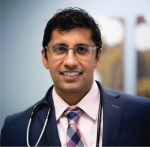
BY ANISH KOKA
The COVID19/vaccine myocarditis debate continues in large part because our public health institutions are grossly mischaracterizing the risks and benefits of vaccines to young people.
A snapshot of what the establishment says as it relates to the particular area of concern: college vaccine mandates:

Dr. Arthur Reingold, an epidemiology professor at UC-Berkeley, notes that UC also requires immunizations for measles and chickenpox, and people still are dying from COVID at rates that exceed those for influenza. As of Feb. 1, there were more than 400 COVID deaths a day across the U.S.
“The argument in favor of mandatory vaccination for COVID is no different than the argument for mandatory vaccination for flu, measles and meningitis,” Reingold said. “For a 20-year-old college student, how likely are they to die? The risk is very low. But it’s not zero. The vaccines are safe, so the argument of continuing to mandate vaccination fits very well with the argument for the other vaccines we continue to require.”
Safety is a relative term that needs to be constantly updated when you’re talking about administering a therapeutic to “not-yet-sick” individuals. We do not vaccinate against smallpox anymore because the absence of circulating smallpox (thanks to the smallpox vaccine campaign) makes the risks of the smallpoxt vaccine too great to be administered to the public.
We can argue endlessly about what exactly the risk of COVID19 was in the Spring of 2020, or 2021, but there should be little argument in 2023 that the risks of COVID pneumonia striking down a young healthy individual is now extremely low.
Continue reading…











